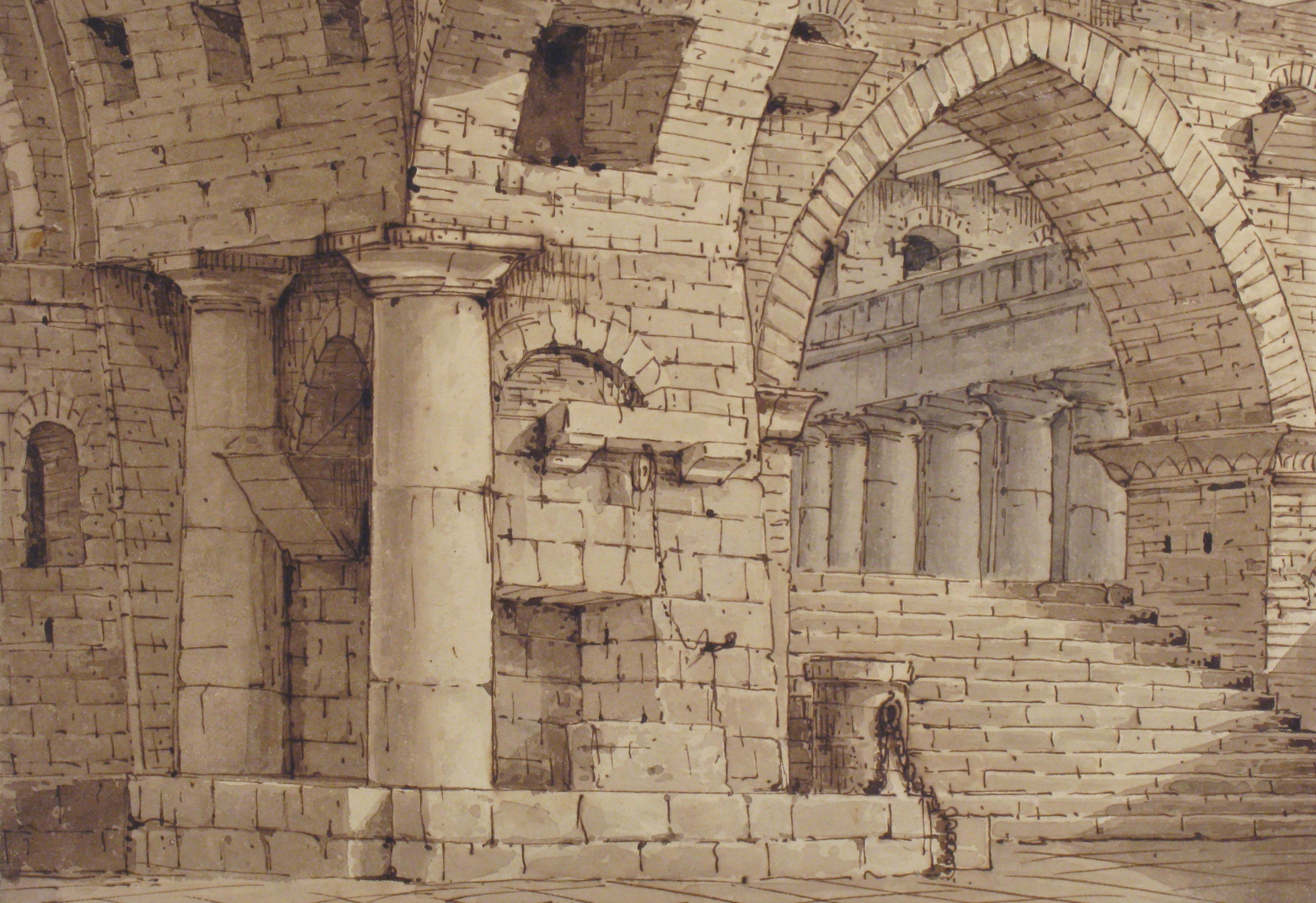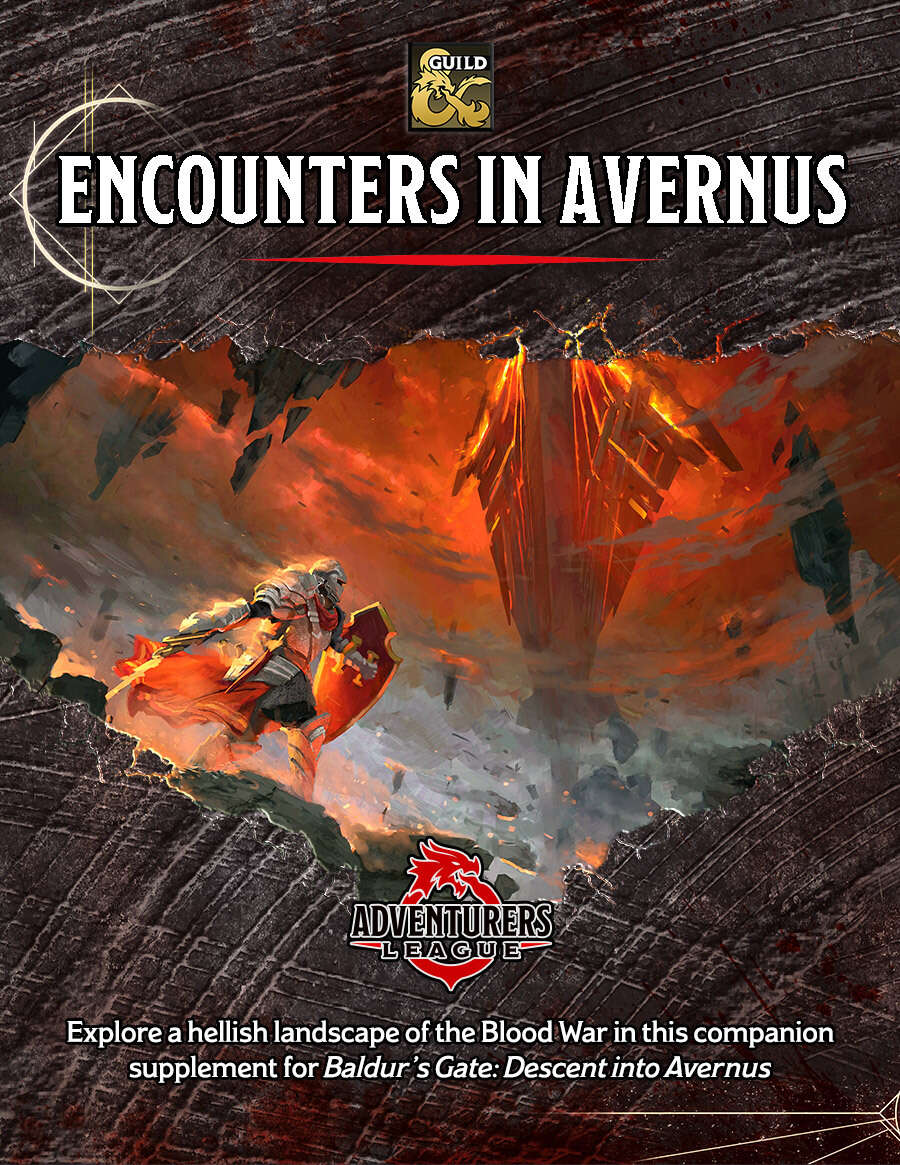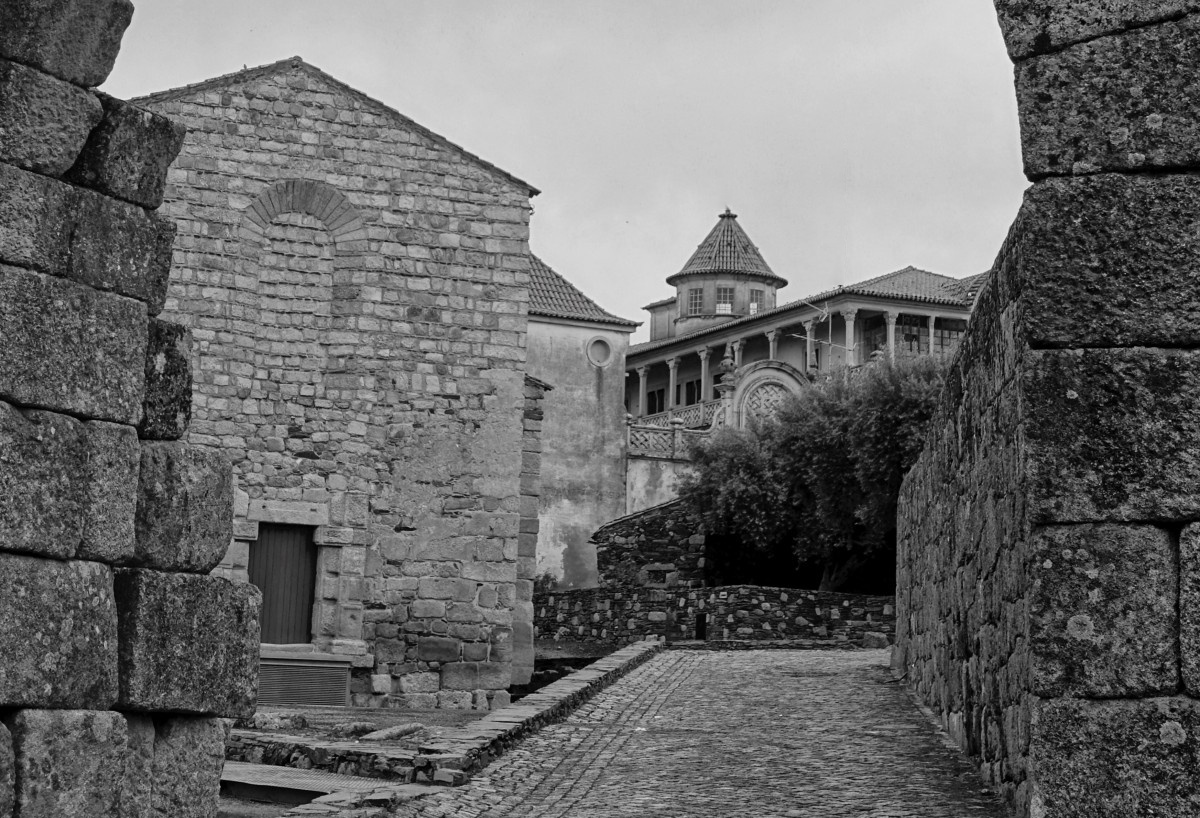NEIGHBORHOODS
High District: Located on the bluff above the city, stretching away from the High Hall. Filled with tall, narrow houses festooned with balconies. There was a time when only nobles were allowed to live in the High District. This prohibition was long ago weakened and then abolished entirely, but the High District remains the demesne of Elturgard’s richest citizens.
Dock District: Below the bluff, the east side of Elturel is the Dock District. This was the oldest part of the lower city, the edge of which was once marked by the Short Loop River (which began from the spring beneath High Hall and ran down the length of the bluff before plunging over the Maiden’s Leap to an incredibly short tributary that looped around to the Chionthar). The river is now more or less gone, having been transformed into the modern canal system which radically expanded the Elturian docks.
In the 14th century, the Dock District was “all dirt, business, and utilitarian buildings” (Forgotten Realms Adventures). The businesses are still here, but a century of empire-building has brought great wealth into the city and classed the joint up a bit. Most notably, all the streets have been cobbled with the same pale cream stone as the High District. (Despite this, the lower class in Elturel is still known as “mucksuckers,” a nickname which originally referred to their boots getting stuck in the thick mud of the Dock District streets.)
Westerly: The west side of the city began gentrifying in the late-14th century and became home to Elturel’s burgeoning middle class. It has more two- and three-story houses than the Dock District, and it tends to eschew the “smellier” businesses (like tanneries) that remain east of the gorge. The small West Docks became slightly preferred by travelers and this was even briefly ensconced into Elturian law, resulting in a lot of inns and travelhouses sprouting up in the southern end of Westerly.
THE MAZE
The bluff on which the High Hall stands is basically a honeycomb of subterranean passages and vaults. This vast labyrinth extends under the streets of the lower city, too. Parts of this complex consist of natural caverns (the full extent of which have never been mapped and which most likely connected to the Underdark before the city was scooped into Hell), but there’s also been extensive tunneling and construction over the last few hundred years.
Stuff down here includes:
- Warehouses hewn out of the solid rock, holding food and supplies that would allow Elturel’s population to swell with refugees to more than half a million and nevertheless support them for at least three months in the case of a siege.
- Armories, some of them secret.
- The Dungeon of the Inquisitor, a subterranean maze which served as Elturgard’s prison.
- Mines, most of which were worked by prisoners from the Dungeon of the Inquisitor.
- Behemoth’s Run, a deep section of the Maze beneath the Dock District which appears to have been tunneled out by huge creatures. Some prisoners claim that you can sometimes hear the vicious roars of the behemoths echoing.
- Smugglers dens, some of which originally had tunnels running out the city (and which would now abruptly open out in mid-air about the Dock of Fallen Cities).

LOCAL COLOR
Unity Tributes, as described in Part 4B, are small sculptures of the Companion or depictions of the twin sun heraldry of the Order of the Companion. Many of these shrines are now surrounded by effigies as Elturians leave small idols depicting themselves in the hope of receiving good fortune.
Driftglobes are small, glowing ball of magical light that float through the air. They are referred to as “little companions,” although their use in Elturel actually predates the Companion by at least a century. They’re relatively expensive, but rather popular with Elturians. They also basically last forever, so Elturel has slowly accumulated a lot of them over the years. They can be found lighting homes, businesses, and so forth. PCs might find them drifting forlornly in the middle of the street or floating in the middle of burnt wreckage. Or they might pop out surprisingly intact as they’re digging through rubble.
Gallops, Canters, and Trots. Elturians often use these riding terms as synonyms for “street.” So rather than, say, Dockside Way or Market Road, there’s the Dockside Trot and Market Gallop. Most thoroughfares still use “street” (like Maidensbridge Street), but here and there you’ll see this bit of local color.
“Recall the Creed.” Even Elturians who haven’t sworn the oath to uphold the Creed Resolute will often say things like “recall the Creed” to invoke actions that are ethically or morally right (even if they’re difficult).
Taverns and Inns. By ancient statute, no inn was allowed to serve food or drink in Elturel. Nor could they share the same building as a tavern.
RANDOM ENCOUNTERS
For random encounters in Elturel (whether streetcrawling or pointcrawling), we’re going to use the encounters from Descent Into Avernus and also Encounters in Avernus (from the DMs Guild). Here’s a unified encounter table, which I’ve fleshed out with a few encounters with various factions in the city:
| d30 | Encounter |
|---|---|
| 1 | Collapsed Building (DIA, p. 55) |
| 2 | Cry for Help (DIA, p. 55) |
| 3 | Ghastly Meal (DIA, p. 55) |
| 4 | Ghoul Pack (DIA, p. 55) |
| 5 | Hateful Patrol (DIA, p. 55) |
| 6 | Imp Sales Pitch (DIA, p. 55) |
| 7 | Narzugon Cavalier (DIA, p. 56) |
| 8 | Spouts of Hellfire (DIA, p. 56) |
| 9 | Vrock Philosophy (DIA, p. 56) |
| 10 | Zombie Horde (DIA, p. 56) |
| 11 | A River Ran Through It (EIA, p. 16) |
| 12 | Abandoned Trunk (EIA, p. 17) |
| 13 | Alchemist Shop (EIA, p. 17) |
| 14 | Fiendish Trap (EIA, p. 17) |
| 15 | Forbidden Delights (EIA, p. 17) |
| 16 | Hellrider Uprising (EIA, p. 18) |
| 17 | Injured Knight (EIA, p. 18) |
| 18 | Keeper of the Keys (EIA, p. 18) |
| 19 | Kid Warlock (EIA, p. 19) |
| 20 | Mad Cultists (EIA, p. 19) |
| 21 | Nasty Weather (EIA, p. 19) |
| 22 | Nycaloth Thugs (EIA, p. 20) |
| 23 | Obsesssed Avenger (EIA, p. 20) |
| 24 | Priestess of Lathander (EIA, p. 20) |
| 25 | Rakshasa Hustler (EIA, p. 20) |
| 26 | Skeleton Bonfire (EIA, p. 20) |
| 27 | Necromantic Mist |
| 28 | Encounter with a Faction |
| 29 | Encounter with a Faction |
| 30 | Roll Again Twice & Combine |
NECROMANTIC MIST: See DIA p. 68. In this encounter necromantic mist has filled a street and/or building, transforming the corpses within it into undead creations.
Because we’ve implemented some significant changes to the lore of Elturel (see Part 5), you’ll want to re-contextualize many of these encounters to be consistent with the new vision of the city. For example:
- In “Hellrider Uprising,” swap out the generic demons for Hell Knights fighting their former comrades.
 In “Keeper of the Keys,” make the chain devil a devil raider (who’s come to town to loot the plentiful source of new keys for his collection).
In “Keeper of the Keys,” make the chain devil a devil raider (who’s come to town to loot the plentiful source of new keys for his collection).- The dead master or parent of the “Kid Warlock” could have been a victim of the Zarielite purge of Elturian wizards.
- The vrock from “Vrock Philosophy” can pontificate on the metaphysics of Elturel’s current predicament: He loves watching cities sink into the Dock of Fallen Cities. The moment when the souls are quenched en masse in the waters of the Styx is a rare wonder of ultimate beauty.
I think these changes would be fairly easy to make on the fly, but your mileage may vary and it wouldn’t take much effort to preflight these. Either way, I recommend frequently thinking about how the encounters could potentially feature one or more of the factions active in the city. These are described at the beginning of Part 5, but a pertinent review:
- Devil Raiders: Opportunistic, independent devils raiding Elturel before its ultimate destruction could be independent operators (like the chain devil described above) or used as foreshadowing of the Avernian Warlords (see Part 7E).
- Hell Knights: These encounters can establish that the High Knights transformed into the Hell Knights; the destruction of high-level spellcasters; and/or the continued corruption of the Hellriders and Order of the Companion. (Recommendations for Hell Knight stats are given in Part 7G.)
- Zarielite Cultists: Highlight that many of these cultists came to Elturel as a sort of pilgrimage AND that the Elturian government has been riddled with Zarielites for decades. They’re mostly just reveling now, but questioning them can fill in a lot of gaps about how Elturel fell and also what’s been happening here since the city arrived in Hell.
- Ikaia’s Followers: Not all of whom need be his Sons or Daughters; there are a number of humans who have more less pledged fealty to someone who they feel can protect them in the midst of all this insanity. These encounters are most likely to happen in the east side of the city.
- Ravengard’s Peacekeepers: Should probably give the sense that they are overwhelmed, but trying hard. More likely to be encountered in the west side of the city, but if encountered in the east are likely to be overwhelmed (cut off from their comrades when Torm’s Bridges were taken).
- Liashandra’s Demons: This faction primarily exists to justify using demon stat blocks in Hell, but you do have some opportunity to establish the larger planar-political situation of the Blood War and the motives behind Zariel’s Elturian recruitment drive. There’s also a slim opportunity for some enemy-of-my-enemy action, as Liashandra’s primary mission is to sabotage the Fall of Elturel, so feel free to tack in that direction for demonic encounters.
Tip: You can use the street generator, random business table, and floor plan generator from the Streetcrawling Tools to quickly contextualize these encounters as needed. Try not to pause the action for this. Frequently you can start the encounter and then multitask, using the generators in the background.













I really like how you have multiple factions all with clear goals, often at odds with many other factions, to bring “Elturel is in chaos” to life.
It’s also pleasing that you have incorporated the Encounter in Elturel content into this, without actually just ‘giving all of the content up’ and removing the need to purchase it (bad for the original creators).
One of my players is obsessed with vampires, and having characters become vampires. Do you think it is feasible to have Ikaia turn a willing PC if they side with him?
If so, how would you handle such a power shift within the party? In my limited experience it’s always hard to balance things like PC vampires, werewolves, etc. when the rest of the party don’t gain similar boons – which can feel quite contrived if suddenly the whole group gets a ‘new thing’.
I think it would play in great with the general themes of corruption and the sacrifice of morality for power in Descent Into Avernus.
Mechanically, I’d probably look at a bespoke system that would phase in their vampiric abilities over time as they level up (bringing them in at points where they’re cool flavor, but not overpowering compared to other options and/or swapped for the abilities they’d normally get at certain levels).
Thanks Justin, I think I’ll spend some time writing something up!
What level do you expect the players to be when meeting Ikaia / in a position to join him?
I love your Alturel work, and successfully used a fair bit of it in my last session, which covered “arrive in Helturel”, to “nearly at the High Hall”, i.e. street/point crawl. As such, I have a couple of observations based on our actual game play:
1. the Street Crawl doesn’t need much focus, I got the most mileage from the Point Crawl. For us, as soon as the first fight vs the devils was resolved, the group’s immediate focus was to get their bearings and scope out the city so they could figure out how to reach the High Hall, so they looked for the nearest town wall, and scaled that so they got a good view of the city, hence we moved right to point crawl.
2. the Point Crawl, with c. 50% random encounter chance per “move”, felt good. A “move” was going from one point to another, or taking a short rest. I gave a bigger chance of having multiple encounters, and rolled even if the destination had a “fixed” encounter, which worked well. For example, we got “warlock kid” when entering the Bridge, which made for a more interesting encounter (players trying to guess what the kid’s agenda was; it wasn’t combat until the PC’s actually tried to cross the bridge, by which time they’d talked to the guards and the kid).
3. Civilians, in my game, didn’t feature enough – partly because they don’t feature much on the random encounter tables, partly because I forgot to “flavour” the moves from point A to B with describing what the civilian population was actually doing in the city, all the way through. As such, the city came out feeling like it was more “wrecked” than I intended. In hindsight, I should have pre-rolled a set of random encounters, so I could more easily ensure the tone and balance was better i.e. not just monsters or whatever, but also regular people feature in the background. By all means roll to see when an encounter happens, but pre-rolling what the encounter actually is can save time at the table and give better outcomes as far as the developing narrative goes, while still leaving room for ad-lib based on the context.
4. the “Long Rest” / “day by day” question never entered my mind until the end of the session, where the group decided that they needed a long rest before going to the High Hall. So I was happy to treat a Short Rest the same way I treated a move from one point to the next, i.e. roll to see if there’s an encounter, but what to do when the group effectively takes eight short rests? I decided I’d only roll for a single encounter chance, which in this case was just a clue that could lead to an encounter later, but it made me realise there’s still one thing missing… the same thing virtually every published adventure is missing… a timeline that runs with or without the PC’s. In our case, I think the answer lies in using the Factions – what are they doing, day by day, that could intersect with the PC’s – either stuff that happens directly, or stuff they hear of happening elsewhere. For example in my game they have heard rumours of Demons, but they won’t see any for a while unless they actively pursue that, it’s of-screen at the Cemetery for a few days yet. They have also heard of a Hell Rider group who are missing in action, again they probably won’t find them until much later at which point they may be dead or surviving allies. They know the area around the High Hall is thick with Devils, so each day that passes, the situation at the Hall needs to get worse, and ideally the PC’s can see or hear of that, so they know that the clock is ticking. A few good bullet points here should go a long way – your pre-thoughts on what’s going on, and how it progresses, with notes on what the PC’s can hear or, see, and/or directly intersect with, depending on what they do.